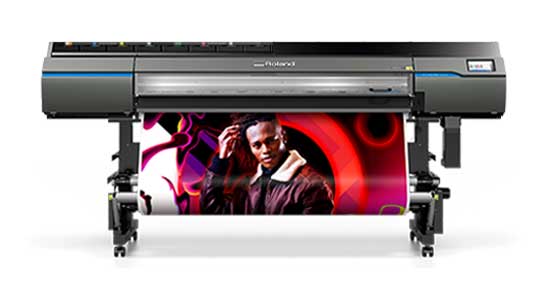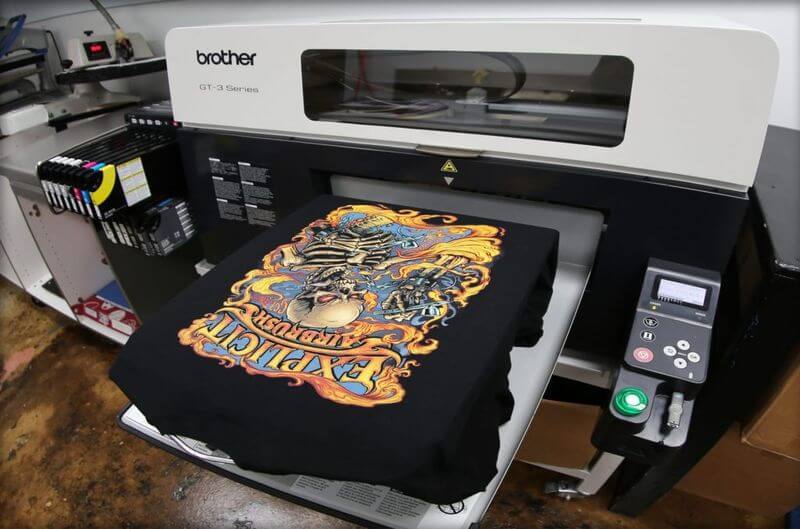What Does Digital Printing Mean?
What Does Digital Printing Mean?
Blog Article
Excitement About Digital Printing
Table of ContentsNot known Incorrect Statements About Digital Printing Indicators on Digital Printing You Need To KnowA Biased View of Digital PrintingThe Main Principles Of Digital Printing What Does Digital Printing Do?A Biased View of Digital Printing7 Simple Techniques For Digital PrintingThe Best Strategy To Use For Digital Printing
Modification likewise permits businesses to stand apart in a crowded market by developing one-of-a-kind marketing materials that separate them from their rivals. One of the major benefits of electronic printing is the capacity to publish variable data. Each published item can be unique, allowing companies to produce customized advertising and marketing products that talk straight to their target audience.Digital printing likewise enables for customization in the design of advertising products (Digital Printing). With digital printing, services can produce layouts that are distinct and tailored to their particular needs.
Little Known Facts About Digital Printing.
This advantages organizations that intend to evaluate different marketing strategies or launch brand-new services and products. By publishing smaller sized amounts of advertising products, businesses can reduce waste and prevent the need for excess inventory. Digital printing is additionally functional. It can print on various materials, consisting of paper, cardstock, vinyl, and metal.
By utilizing various materials and formats, services can create special advertising materials that stand out from their competitors and attract attention from their target audience. Digital printing likewise uses consistency. With conventional printing techniques, there is often variant between prints due to distinctions in ink coverage, pressure, and other aspects.
This uniformity can help develop customer count on and credibility, showing that the service is dedicated to giving high-grade materials. Uniformity is specifically crucial for organizations that wish to develop customer depend on and reliability. By making sure that every print is constant, companies can show that they are committed to offering top quality products and focusing on the details.
Unknown Facts About Digital Printing

On top of that, digital printing creates much less waste because it can print as needed and in smaller sized amounts, minimizing the need for excess supply and products. Digital printing also uses much less energy contrasted to typical printing methods. Digital printers do not need as much power to operate, as they do not require to warm up as a lot or utilize as much power to run.
All about Digital Printing

Balanced out printing requires a plate for every color published. Conventional countered printing is a print approach that makes use of light weight aluminum plates to More Help move ink onto a rubber sheet (frequently referred to as a "blanket"). The picture is after that rolled onto the printing surface. This printing approach is taken into consideration "offset" since the ink is not moved to the paper straight.
The Single Strategy To Use For Digital Printing
Countered printing permits for a large range of print products to be made use of during production. The top quality photos created through countered printing make it the favored method, specifically among visuals developers, when seeking the greatest shade reproduction, information, and professional-looking prints.
For electronic inkjet printing, ink is transferred directly onto the surface area. Instead than depending on light weight aluminum plates and rubber blankets to move a photo, digital printing utilizes liquid ink throughout manufacturing.
Digital Printing - An Overview
Since offset printing can blend custom-made shade inks for each job, it will naturally get the shades spot-on. Count on offset printing for tidy, distinct kinds and photos without touches or places.
It sets you back a great deal to begin a countered job. You need navigate to this website to invest cash right into creating home plates, which requires time. When you've spent it, all of the products are ready to go, and you'll invest much less on big offset tasks than a digital print, which is about the very same per item no matter how large the task obtains.
Each print equals. You take the chance of less odd variants triggered by discrepancies in water and ink. Digital why not try these out printing is less pricey for low-volume tasks. The rate each goes down for digital printing, so eventually, they crisscross. Transforming information within a solitary print work. Claim you were printing out postcards promoting a concert.
Get This Report on Digital Printing
While digital printing or inkjet printing is the favored option in the present times, there are compelling reasons to convert from offset to digital printing systems. When printing offset or electronically, crucial decisions and processes are involved in shade matching.
Whichever the case, the shade will certainly require to be matched. Shade matching of digital printer ink is no more challenging with dyes and pigments. Industrial inkjet printing offers versatility for printing on lots of various substrates. Digital printing is excellent for consumers that do not need longer runs and warehousing products.

One advantage of digital printing is selecting from a variety of electronic substrates. With balanced out printing, substratums compose, on average, 30% of the expense of the work. With digital printing, the cost of the substratum in the total job is small. This permits for more options than ever previously, and that benefits marketers and services.
Facts About Digital Printing Revealed
drop-on-demand is the 2nd printing modern technology to think about. Constant inkjet systems require significant upkeep, more driver training, and greater downtime. Equipment expenses in inkjet printing are far reduced than countered printing as there are no plate-making, plates, and press expenditures. Beyond the capital expense, the prepress tools and printing machine call for very experienced operators in countered printing, which includes labor costs.
Report this page